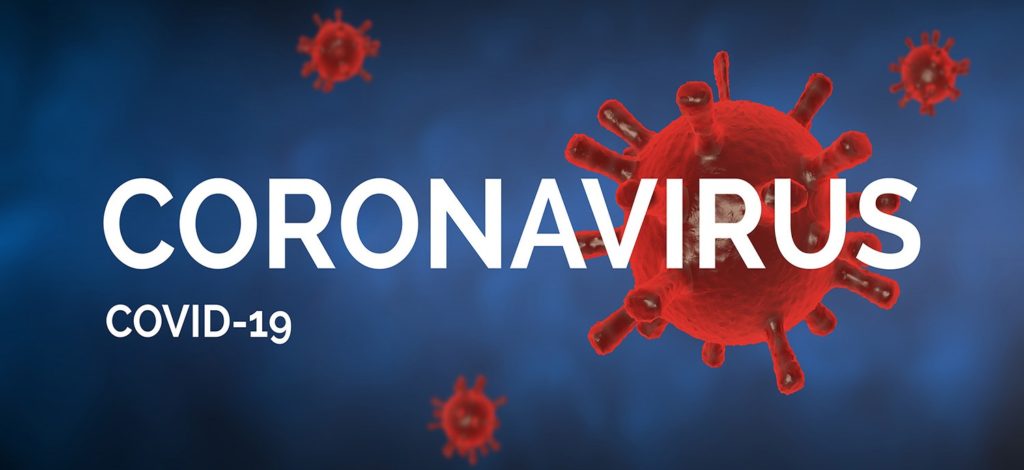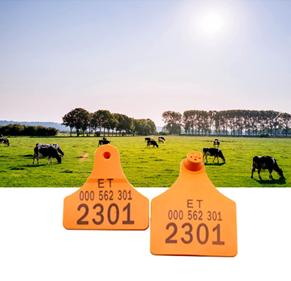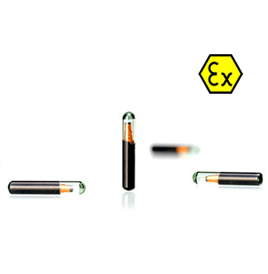
Tierhaltungen waren schon immer anfällig für den Ausbruch von Tierseuchen. Wir haben den Ausbruch der Vogelgrippe miterlebt, H1NI Schweinegrippe, Nipah, Ebola und jetzt COVID-19.
Viele Länder haben ernsthafte Maßnahmen ergriffen, um den weiteren Ausbruch einer Epidemie zu bekämpfen, und die Tierhaltung und die Tierhaltung reguliert.. Various technologies are being used for identification and monitoring of livestock and proper management of animal husbandries. There are few must use products by Animal Husbandry post COVID.
The most important change that has been made to the livestock controlling and monitoring is the use of RFID technology. The RFID enabled tags use the EID number or the management number on the button that is placed on the animal. Die Informationen auf dem Tag werden mit Hilfe von Funkwellen gelesen und gespeichert. This technology is less time consuming, more economical and accurate.
Why Animal Husbandry uses RFID tags?
1. Lebenslange Anwendung: RFID tags stay attached on the animal for the lifetime and don’t fall out or become unreadable when covered in dirt or mud. Die meisten dieser Tags sind wasserdicht und stoßfest. Die RFID-Tags machen die Farmverwaltung einfach und weniger zeitaufwändig.
2. Einfache Implementierung: Jedes Tag hat eine eindeutige Identifikationsnummer aufgedruckt, die leicht über einen EID-Reader gescannt werden kann. Kein Papierkram erforderlich. Alle Prozesse werden computerisiert und verbessern die Genauigkeit der Daten. Im Gegensatz zu visuellen Tags, RFID-Tags können auch aus der Ferne gescannt werden und erfordern nicht, dass das Tier stillsteht, oder einen visuellen Kontakt zwischen Reader und Tag. RFID-Tags sind sicherer und minimieren die Fehlerwahrscheinlichkeit.
3. Kostengünstige: RFID tags are cost effective and more efficient. Ihre langlebige Funktion macht sie billiger als andere Tags, die aufgrund von Verschleiß und Fallen des Tieres ersetzt werden müssen. Die Technologie erfordert weniger menschliches Eingreifen. Daher, reduziert auch die Personalkosten.
4. Einfache Überwachung: Landwirte und Viehhalter können die Gesundheit ihrer Rinder von der Geburt bis zur Schlachtung überwachen. Halten Sie eine Kontrolle über alle Tierkrankheiten, Verfolgen Sie die Bewegung von Tieren, ohne sie zu stören, und zeichnen Sie ihren Transport von einem einzigen Gerät aus auf.
5. Government Regulation: Many countries have made it mandatory to use the RFID tags in order to quickly trace an outbreak of livestock diseases. Die traditionelle, Nicht-elektronisches Tracking-System kann mehrere Monate dauern, um solche Ausbrüche aufzuspüren.
Here are the MUST USE RFID products by Animal Husbandry
1. RFID-Ohrmarke: RFID ear tag is a plastic or metal object that carries an identification number on it and is placed in the ears of an animal. It carries a fifteen-digit unique Animal Identification Number (Ain) zusammen mit wenigen anderen Details wie Property Identification Number. Die AIN besteht aus einem 3-stelligen Firmencode und einer 12-stelligen Einzeltiernummer. Es kann von Hand oder von einem Ohrmarken-Applikator aufgetragen werden. Ein ID-Reader wird verwendet, um die Daten dieser Tags zu scannen und zu sammeln., die dann heruntergeladen und auf einem Computer gespeichert wird. Dieser Prozess verringert die Fehlerwahrscheinlichkeit und führt eine Aufzeichnung aller Daten, die sich auf ein Tier beziehen, an einem anderen.

RFIDHY Ear Tag kommen in verschiedenen Frequenzen von 134.2KHz, 125KHz bis auf bis zu 860 MHz und 960MHz. The waterproof and shock-resistant RFID tag is designed in a way to implement the technology efficiently and hassle-free. Mit einem 100% Leistungsgarantie, RFIDHY’s ear tag last for the lifetime of the animal. The electrical parts of the RFIDHY Ear Tag is covered by TPU material which is convenient and strong in the harsh environment too. RFIDY bietet Ihnen den Vorteil, die ID-Nummern nach Ihren Anforderungen zu wählen. Sie können auch Ihre Farbe und den Inhalt auswählen, den Sie auf den Tags drucken möchten.. Diese ISO-11784/11785 zertifizierten Tags sind mit einer dreijährigen Garantie.
2. RFID-Glas Tag: Glass Tag is essentially a tiny transponder that stores information and emits radio frequency. It comes in the form of a miniature capsule not bigger than grain of rice. The capsule contains a microchip containing a unique code. Unlike ear tags that are placed on the animal body, glass tags are injected in the animal body like vaccines. The information on the tag is scanned with a RFID tag reader by scanning the surface of the animal skin. The reader captures all the details mentioned on the tag with accuracy.

RFIDHY Glass Tube Tag is a glass RFID chip embedded transponder manufactured by fully automatic production technology thereby ensuring the consistency and reliability of its quality. It offers a variety of chip options in both low and high frequency. It has high Q Value and sensitivity that protects it from harsh environment. Being heat resistant and stable, it can be imbedded in a broad spectrum of potential enclosure material. It has unlimited resistance to water and chemical absorption. The tag has memory storage options from 64 Bit schreibgeschützt, um 2048 Bit-Lese-/Schreibzugriff.
The RFID tags are recommended for cattle, Schafe, goats, pigs and other pet animals. These tags are widely used in slaughter houses, poultry houses and hatcheries to identify and monitor the livestock. Track any disease and keep a check on their health. They are used in keeping records of the livestock movement, their feeding and vaccination schedules too. These features of RFID tags make them a must use product for the Animal Husbandry industry after the world recovers from COVID.





